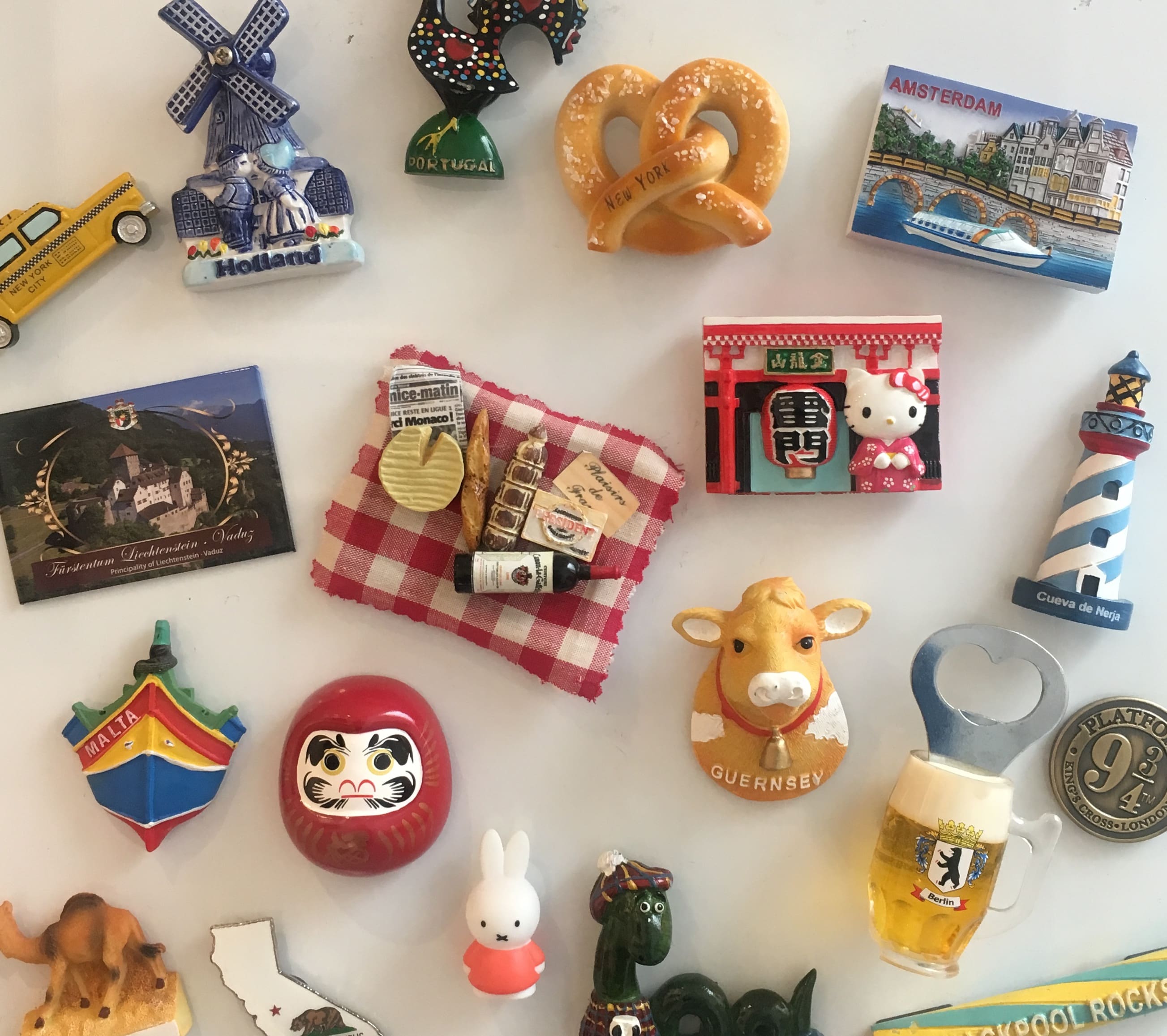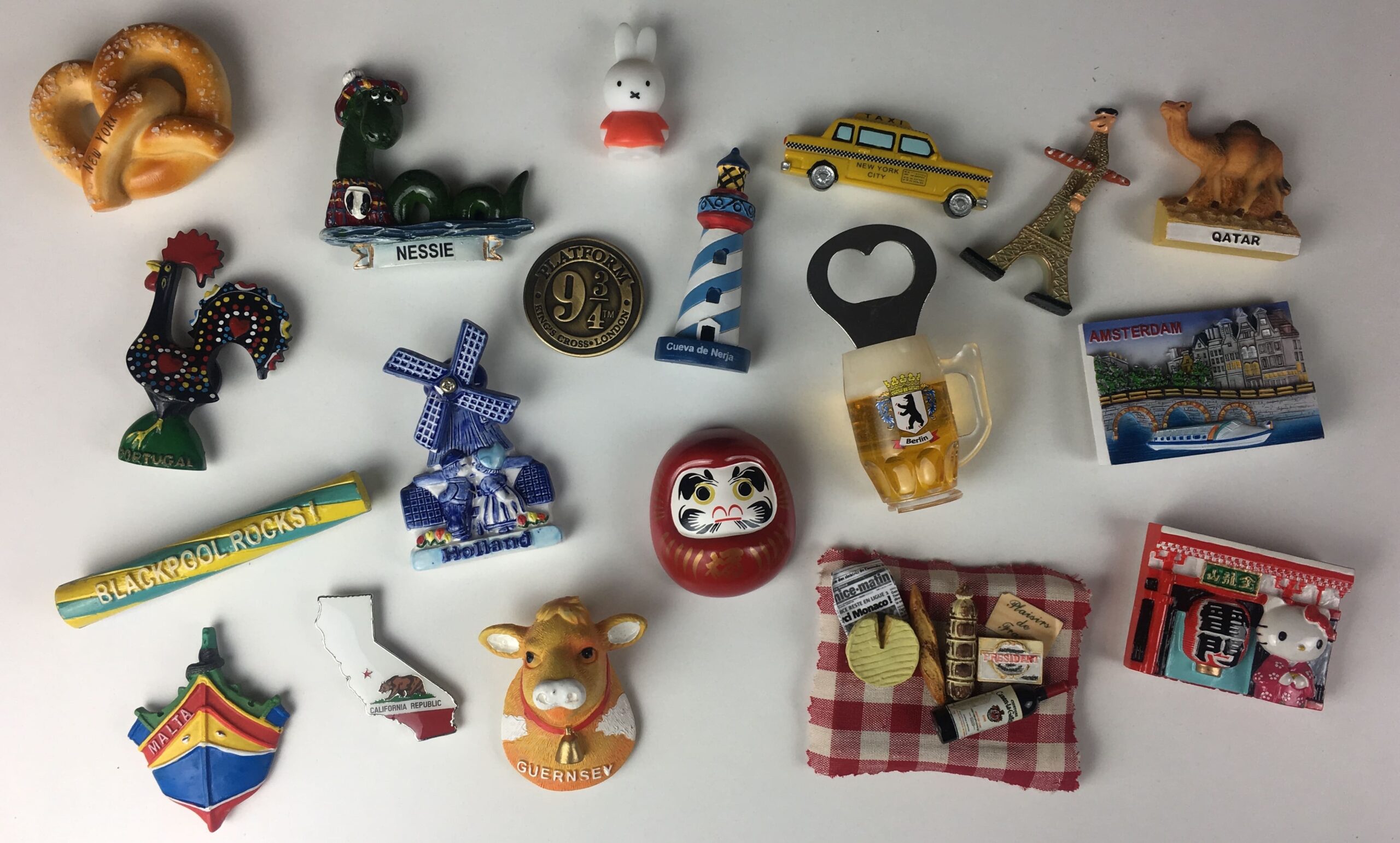I was in our kitchen gazing at our fridge magnets, and with holiday season here again, it made me reflect on previous excursions and where various members of the Elastic team had explored in the past. We have a team fridge magnet board where, after any holiday, we all bring back magnets as mementos. Across the years, it’s been really fascinating to look at them all collected in one place. Looking at all the different travel-themed images, they very quickly took me to places; some I’ve been to myself and others I could easily imagine. This daydreaming made me think- what do our souvenir magnets represent and what are they good for? Do they misrepresent the places they are meant to commemorate? Are they just meaningless tacky trinkets? After all, they often clash with how a country, city or people see themselves, so what is their validity in the global society we live in? Do all the Dutch wear clogs and live in windmills, any more than all Scots wear kilts, play bagpipes and eat haggis? Well, of course, not exactly.

I believe viewing it like this, though, is missing the point. One thing modern marketing teaches us now more than ever is that while you create, develop, nurture and evolve your brand, it’s your audience that really ‘own’ it. They own it because it exists for them- it captures their attention and it tells a story that they find interesting.
As a brand evolves, it does so at a pace set by the audience; it lives and dies by this pace, too. So in the case of our travel magnets, while locals may deem the images cliché or old-fashioned or not representative of their day-to-day lifestyle, these icons have endured. For better or worse, they have stood the test of time. Often, the link between these images and what they represent is instant and immediate; tartan does make a lot of people instantly think of Scotland, and tourists love it. Same with Canadian maple syrup and Scandinavian Viking horns. It’s scripted thinking, but it does, in fact, provide a gateway to a more well-rounded perception. And in an increasingly homogenised world developing from the rapid globalisation of the 21st century, these elements continue to differentiate one city, country or culture from another.
No matter the mixed-up historically cliched images we end up with, these iconic travel images still speak to the viewer. Even where they misrepresent the present with stories, dreams and myths (because, after all, it is often the idealised past that people dream of), they still conjure up unforgettable images of the places we’ve visited- or dream about visiting. And, of course, once that doorway has been opened, you can broaden your understanding by exploring galleries, museums, local shops, architecture and restaurants to see for yourself that there is, indeed, much more to anywhere than a tacky souvenir.
But it was literally the image on the magnet that drove you to visit there, and it remains valid today in its power to provide an open invitation to a country. So I say olé to Spanish tapas and Japanese sushi and Egyptian pyramids and here in Edinburgh, let’s embrace the tartan. Yes, there’s absolutely more to discover about any given place, but there’s no doubt a power in these cultural signposts.
Looking for a way to develop your brand beyond the cliché? Contact us today!



